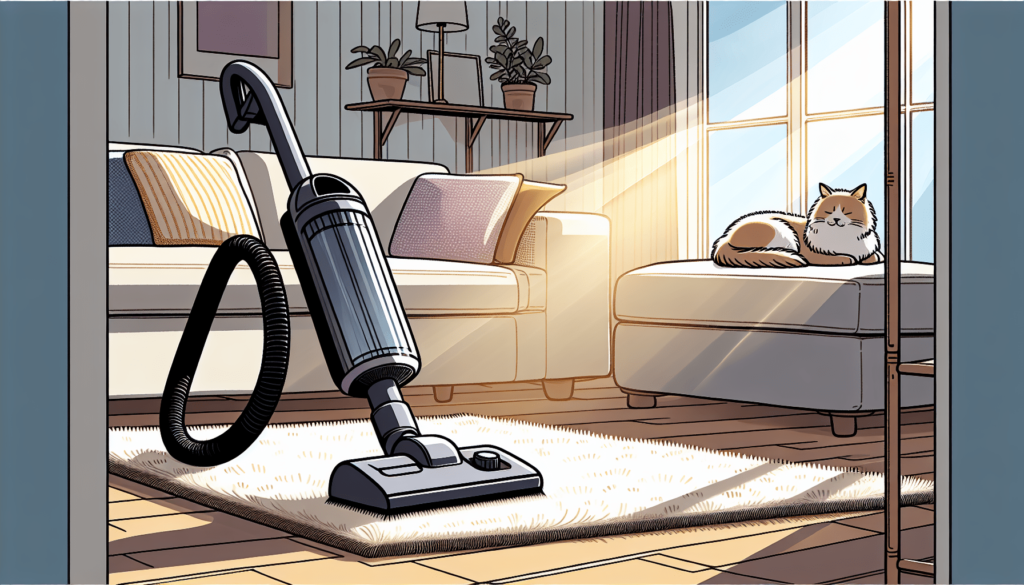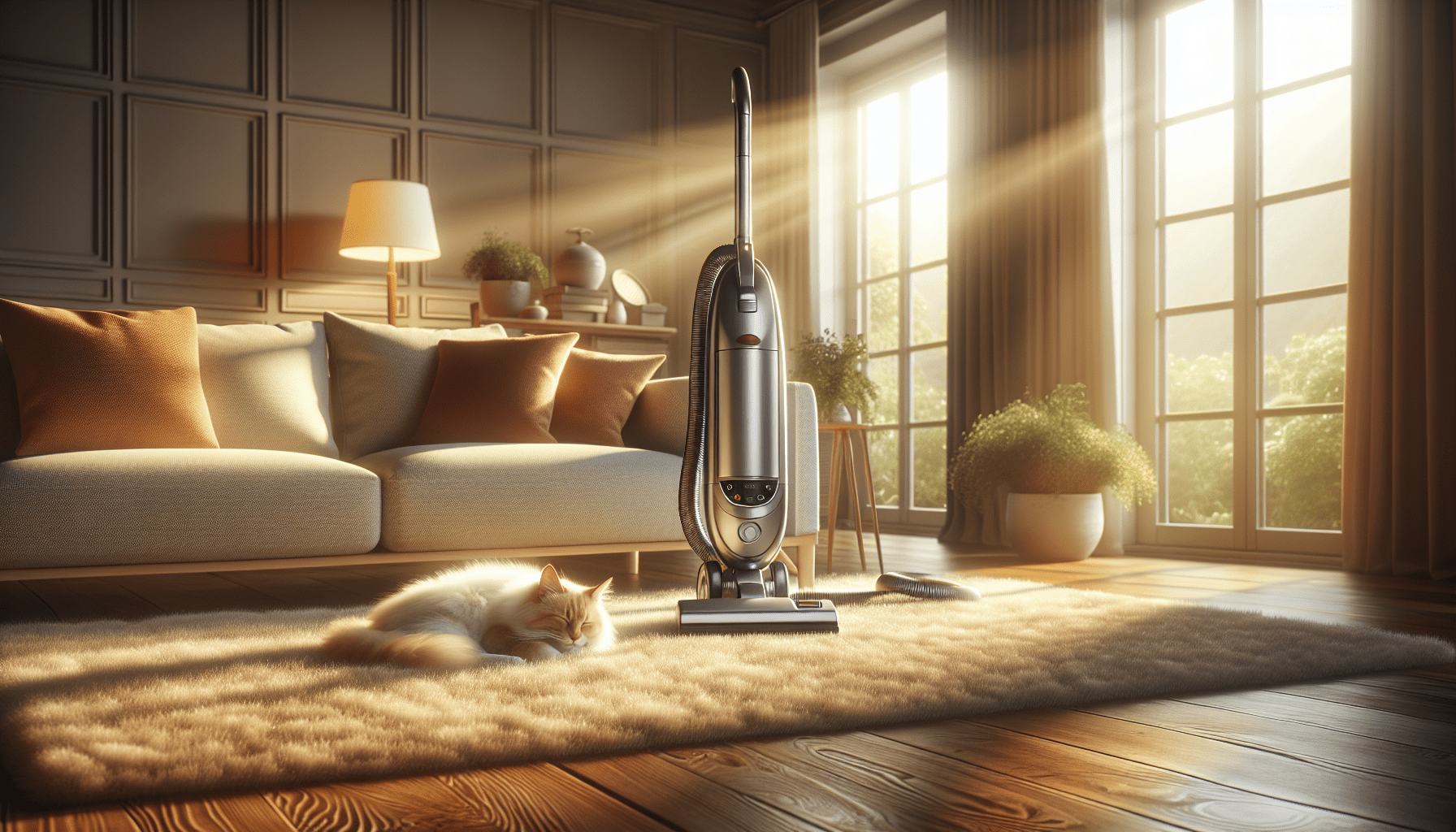If you adore your furry friend but find yourself sneezing and sniffling more often than you’d like, you’re not alone. Our article, “7 Tips for Reducing Pet Allergens in Your Home,” offers practical strategies to create a more comfortable living environment for both you and your pet. From improving cleaning routines to investing in air purifiers, these easy-to-follow tips can help keep allergens at bay, allowing you to enjoy the companionship of your beloved pet without the discomfort of constant allergies. Dive in to discover how small changes can make a big difference in your home. Have you ever wondered if there is an effective way to reduce pet allergens in your home? If you love your furry friends but suffer from allergies, you’re not alone. Many pet owners face the challenge of managing allergens without having to say goodbye to their beloved pets. The good news is that it’s possible to keep your home more allergen-free with some practical tips and routines. Let’s dive into the 7 essential tips for reducing pet allergens in your home.
Understand Pet Allergens
Before you can tackle pet allergens, it’s important to understand what they are. Pet allergens are not just from fur or feathers; they are proteins found in a pet’s skin flakes, urine, and saliva. When these proteins become airborne or cling to surfaces, they can trigger allergic reactions.
What Are the Common Signs of Pet Allergies?
Knowledge is power, especially when it comes to health. Recognizing the signs of pet allergies can help you take steps to manage them effectively. Common symptoms include:
- Sneezing
- Runny or stuffy nose
- Itchy or watery eyes
- Coughing
- Wheezing or difficulty breathing
Types of Pet Allergens
Here’s a quick breakdown of different pet allergens and their sources:
| Allergens | Source |
|---|---|
| Proteins | Skin flakes, saliva, urine |
| Dander | Dead skin cells |
| Fur | Not an allergen itself, but it can transport allergens like dust and pollen |
Keep Your Home Clean
Keeping your home clean is one of the most effective ways to reduce pet allergens. Regular cleaning routines can drastically decrease the number of allergens floating around.
Vacuum Regularly
Use a vacuum cleaner equipped with a High-Efficiency Particulate Air (HEPA) filter to trap tiny particles. Regular vacuuming of floors, carpets, and upholstered furniture can remove significant amounts of allergens.
Tip: Vacuum at least twice a week, or daily if you have severe allergies.
Wash Pets and Their Bedding
Bathing your pets regularly can reduce the amount of dander and allergens they spread around your home. While it varies by pet type and breed, most pets benefit from at least monthly baths.
Tip: Use hypoallergenic pet shampoos to avoid skin irritations.

Use Air Purifiers and Ventilation
Investing in air purifiers can significantly reduce airborne pet allergens in your home. Good ventilation helps maintain air quality and reduces allergen buildup.
Air Purifiers with HEPA Filters
Choose air purifiers with HEPA filters designed to capture small particles, including pet dander. Place these in rooms where you and your pets spend the most time.
Improve Home Ventilation
Keep windows open when possible to let fresh air circulate. Consider exhaust fans in rooms with less natural ventilation to help push out allergens.
Create Allergen-Free Zones
Creating designated pet-free zones in your home can provide allergen-free spaces where you can relax and sleep without worrying about allergic reactions.
Bedroom Sanctuary
Make your bedroom a pet-free zone. Thoroughly clean this room and keep it off-limits to pets. Use allergen-resistant covers for mattresses and pillows to reduce allergen exposure while you sleep.
Living Areas
If you have severe allergies, it might be worth restricting pets from high-traffic areas like the living room. It can be challenging, but creating these boundaries can help minimize overall allergens in your home.

Flooring and Furnishings
Your choice of flooring and furnishings can have a significant impact on allergen levels. Certain materials can trap allergens more than others.
Hard Flooring
Hardwood floors, tile, or linoleum are easier to clean and don’t trap allergens like carpets do. If replacing carpets isn’t an option, consider regular steam cleaning to minimize allergen buildup.
Hypoallergenic Furnishings
Opt for easy-to-clean furniture materials like leather or vinyl over fabric, which can trap allergens. Choose curtains instead of blinds for windows, as they can be washed easily.
Regular Grooming Practices
Regular grooming can help keep pet allergens in check. This involves brushing your pet frequently and keeping their fur trimmed and tidy.
Brushing
Brush your pet outside to prevent loose dander from settling indoors. Specific grooming tools are designed to reduce shedding and can be very effective.
Trimming
Keeping your pet’s fur trimmed, particularly around their face and paws, can significantly reduce the spread of allergens. If you’re unsure how to do this effectively, consider professional grooming services.
Washable Covers and Bedding
Use washable covers on furniture and wash pet bedding frequently. This prevents allergen buildup on surfaces where both you and your pets spend a lot of time.
Pet Bedding
Choose pet beds that are easy to disassemble and wash. Aim to wash pet bedding weekly in hot water to kill allergens.
Slipcovers for Furniture
Invest in slipcovers for your sofa and other upholstered furniture. Wash these regularly to keep them free from allergens.
Healthier Living with Pets
While reducing pet allergens requires effort and consistency, it’s worth it for the love and companionship your pets bring to your life. By following these tips, you can create a healthier living environment for you and your furry friends.
Professional Help
Don’t hesitate to seek professional advice if your allergies are severe. Allergy specialists can offer additional strategies and treatments to help you manage pet allergens more effectively.
Summary Table of Tips
| Tips for Reducing Pet Allergens | Actions to Take |
|---|---|
| Keep Your Home Clean | Vacuum regularly, wash pets and their bedding |
| Use Air Purifiers and Ventilation | Invest in HEPA filter air purifiers, improve home ventilation |
| Create Allergen-Free Zones | Designate pet-free areas, use allergen-resistant bedding |
| Flooring and Furnishings | Opt for hard flooring, use hypoallergenic furniture |
| Regular Grooming Practices | Brush pets outside, trim fur |
| Washable Covers and Bedding | Use washable slipcovers, wash pet bedding weekly |
| Healthier Living with Pets | Seek professional help if needed, create a healthy environment |
By making these adjustments, you can enjoy the company of your pets without the discomfort of allergens. It’s all about balance and creating a harmonious living space for you and your pet.
